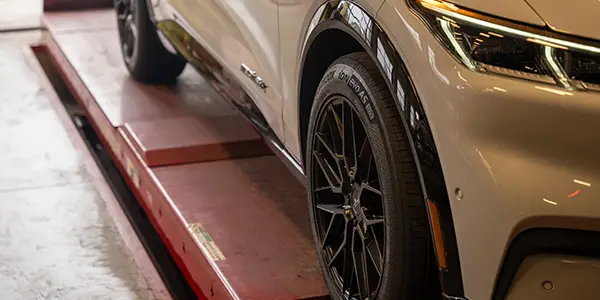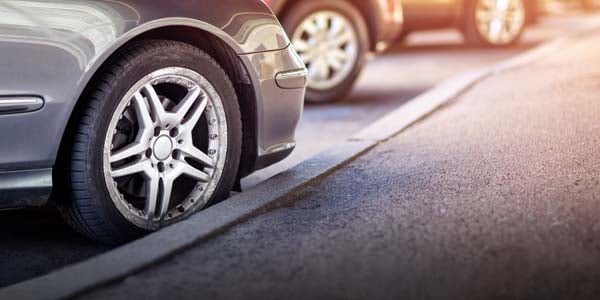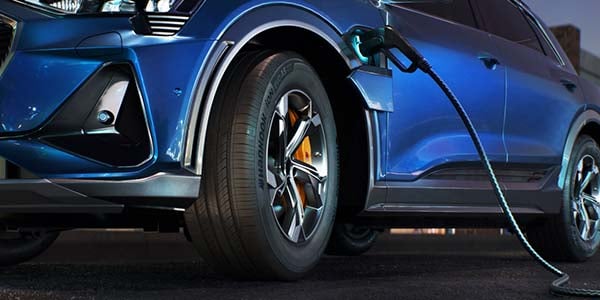What Is Rolling Resistance?
Rolling resistance is the combination of forces that work against the forward motion of your vehicle. The weight of the vehicle, gravity and inertia, the amount of friction between the tires and the road surface, and air drag all play a part. When you coast in your car or on a bike, rolling resistance is what slows you down. The more rolling resistance, the more power it takes to propel a vehicle. Between 3 and 11 percent of the gas used in passenger vehicles goes to overcoming this force, so reducing it means saving on gas.
Since tires contribute to between 15 and 25 percent of a vehicle’s overall rolling resistance — depending on how fast you’re going, vehicle type and road surface — they are a significant factor in gas economy.
What Are Low-Rolling-Resistance Tires?
Think of coasting with your foot off the gas. If you have a cargo carrier on the roof, your vehicle will slow down quicker (air drag and extra weight). If you’re going downhill, you pick up speed (gravity). If your tires are low on air or the ground is soft, you’ll stop sooner (more friction with the road). Eventually, you come to a halt due to rolling resistance.
Here is what happens as a tire goes through each revolution. As a tire rolls under a vehicle’s weight, it flattens a bit at the contact patch (where it touches the road) then recovers its roundness as it circles. This consumes energy and creates heat. Fuel (either gasoline, diesel or EV battery power) is used to compensate for this lost energy.
Low-rolling-resistance tires strike a balance between safety features that helps control and stop the car, and design elements that provide better gas mileage. These tires:
- Weigh less and have thinner sidewalls.
- Are made with rubber compounds that reduce heat and friction.
- Have tread designs with shallower tread depth.
These types of tires are one way auto and tire manufacturers are trying to improve fuel efficiency.
How Much Does Tire Choice Affect Fuel Economy?
A 2005 Transportation Research Board study looked at the differences in fuel consumption and tire life if passenger car owners opted for low-rolling-resistance tires. The results? A 10 percent reduction of average rolling resistance was feasible, would not result in significant safety issues and would increase the fuel economy of American passenger vehicles by 1 to 2 percent. This would mean saving about 1 billion to 2 billion gallons of fuel per year, the equivalent of taking 2 million to 4 million cars and light trucks off the road.
They also found that tires offering the best wet traction were often higher in rolling resistance. Every tire type offers a tradeoff in road grip, handling, noise, wear resistance, appearance, price and gas mileage. Tires with worn tread may have less rolling resistance due to shallow, smoother tread but might be unsafe to drive on, for example.
The desire to reduce rolling resistance has to be balanced with considerations like air pressure, road conditions, climate, driving style and the vehicle type.
What To Do for More Fuel-Efficient Tires
According to the EPA, there are ways to get better fuel economy no matter what type of tire you have mounted. By keeping your tires properly inflated, you can improve gas mileage by about 3 percent. Also, get your tires rotated regularly so the tread wears evenly. Remember that worn tread will have lower rolling resistance, so you may notice a slight decrease in fuel economy when you replace tires.
Learn More
What you need to know

What Are Eco-Friendly Tires?
Discover the benefits of eco-friendly or low-rolling resistance tires, including fuel efficiency and reduced emissions, with Les Schwab’s sustainable tire options.

Can I Put Smaller Tires On My Car or Truck?
Will buying smaller tires impact your car’s safety and driveability? Read this article to find out how smaller tires affect your vehicle’s performance.

Choosing the Right Tires for Your Electric Vehicle (EV)
Uncover the key aspects of tires appropriate for EVs: energy-efficient, high traction, and low noise. Find answers to your questions and pick the right tires for your electric powered vehicle.

